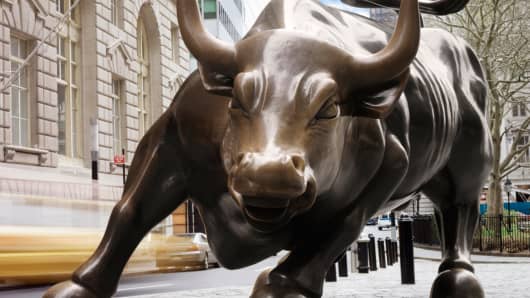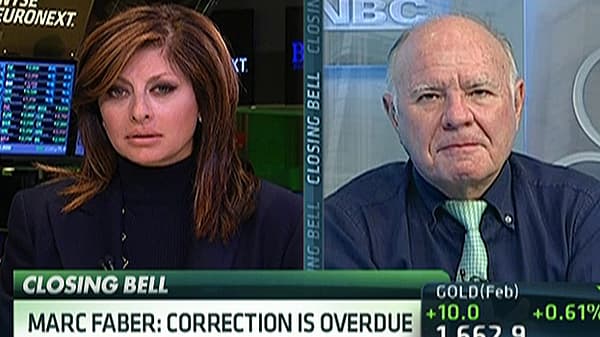Stocks with smaller market values – as represented by the Russell 2000 (IWM) – got pounded. Smaller companies are considered to be more risky than their larger brethren and are therefore considered to be a leading indicator of the animal spirits that lead a rally.
"The Russell led us up and will lead us down," said Doug Kass of Seabreeze Partners Management.
History shows Kass is right – at least about the first part. The Dow is up about 10 percent from its fourth-quarter low caused by fiscal cliff jitters. The Russell 2000 is up a more explosive 15 percent over that same time period.
"The small caps were a great tell, as well as the transports," said Phil Pearlman, trader and executive editor of StockTwits.com. "We're overdue for a pullback."
The Dow Transportation ETF (IYT) was hit even harder on Wednesday. Traders typically look for confirmation from the Dow Transports that a breakout is for real because it's made up of companies linked directly to economic growth, such as UPS and Union Pacific.
"Small caps broke, transports broke," tweeted trader J.C. Parets today. "All signs pointing to midcaps next followed by S&P's."
Parets, president of Eagle Bay Capital, was among the first and most vocal to point out these red flags on the social network.
Another key indicator bearish traders point to is the Citigroup Economic Surprise Index, which turned negative this week. The index from the bank measures how key economic data performs relative to consensus estimates from economists.
(Read More: Better Enjoy the Market Rally While You Can: Faber)
Fourth-quarter gross domestic product unexpectedly dropped at a 0.1 percent annual rate, according to the Commerce Department today. Economists were expecting an expansion of at least 1 percent.
To be sure, not everyone sees these indicators as signs of trouble, but rather a signal this bull market is maturing.
"If we continue to get bonds into stocks, those investors are likely looking for large cap dividend-payers, not as much small caps," said Stephanie Link, director of research at TheStreet.com.





